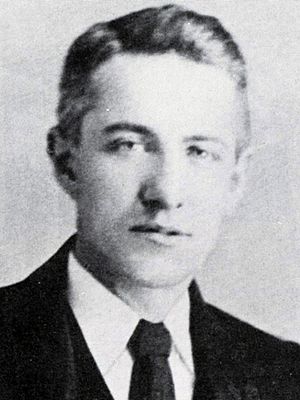William Partridge (Irish revolutionary) facts for kids
Quick facts for kids
William Partridge
|
|
|---|---|
 |
|
| Birth name | William Patrick Partridge |
| Born | 8 March 1874 Sligo, Ireland |
| Died | 26 July 1917 (aged 43) Ballaghaderreen, County Roscommon, Ireland |
| Buried |
Kilcolman Cemetery
|
| Battles/wars | Easter Rising |
| Other work | Trade unionist, engineer |
William Patrick Partridge (born March 8, 1874 – died July 26, 1917) was an important Irish leader. He worked to improve the lives of workers and was part of a group that wanted Ireland to be independent. He was a key member of James Connolly's Irish Citizen Army. He also took part in the Easter Rising in Dublin in 1916. Later, he became a council member for Dublin City Council.
Contents
Early Life and Beginnings
William Partridge was born in Sligo, Ireland, in 1874. His family later moved to Ballaghaderreen, County Roscommon, where he grew up. His father, Benjamin, was a train driver from England, and his mother, Ellen, was Irish. William also had an older brother, Felix, who became a famous writer.
When William was 17, he began training as a mechanical fitter. This job involved working with machines and engines for the Midland & Great Western Railway in Sligo. From a young age, William enjoyed writing. He even had stories and poems published in a magazine called The Shamrock.
Working for Workers' Rights
When William was 22, he moved to Dublin to work at the railway workshops. There, he became very interested in helping workers. He joined a group called the Amalgamated Society of Engineers. He helped lead strikes in 1887 and 1902. This made him an early leader in the growing movement for workers' rights in Ireland.
Partridge later became an organizer for the Irish Transport and General Workers' Union. This union was started in 1909 to help workers get fair treatment. He worked closely with another important leader, Jim Larkin. Together, they set up new union offices in towns outside Dublin. William was based at the union's Emmet Hall in Inchicore.
He also joined Conradh na Gaeilge (the Gaelic League), which promoted the Irish language and culture. William worked hard to improve housing, education, and public services for working people in Inchicore. Because of his efforts, he was elected to the Dublin City Council. He served as a council member for the Sinn Féin party.
The Great Lockout of 1913
In 1913, Dublin faced a huge workers' strike known as the Great Lockout. William Partridge was one of the main leaders during this difficult time. He spoke out against people who supported the factory owners and criticized the union. He believed they were not doing enough to help the many poor people in the city.
Partridge and the Easter Rising
William Partridge was an early member of the Irish Citizen Army. This group was formed to protect workers and fight for Irish independence. Other important members included Larkin, P.T. Daly, Thomas Foran, Seán O'Casey, and Francis Sheehy-Skeffington.
Before the Easter Rising in 1916, William was sent to Kerry. His job was to help unload weapons that were expected to arrive from Germany. These weapons were meant to help the Irish fight for independence. He planned to use union members at Fenit Harbour to unload the German ship, the SS Libau.
However, the plan did not work out. The German ship was sunk by its captain after it was spotted by the British Navy. William then returned to Dublin. The night before the Rising began, he stood guard at Liberty Hall. This was where the important document declaring Irish independence was being printed.
During Easter Week, Partridge fought bravely in the College of Surgeons building. He was with Countess Markievicz and Michael Mallin. In the middle of the fighting, he carried a wounded female sniper, Margaret Skinnider, to safety. He carried her on his back while under constant attack.
Later Life and Passing
After the Easter Rising, William Partridge was arrested. He was sentenced to a long time in prison. This sentence was not for his role in the Rising itself. Instead, it was for speeches he had made in Kerry in 1915, which were seen as more serious by the authorities.
William was released from prison in April 1917 because he became very ill. He suffered from a serious kidney disease.
On July 26, 1917, William Partridge passed away in Ballaghaderreen at the age of 43. He was buried in Kilcolman Cemetery. Countess Markievicz, who fought alongside him, spoke at his funeral. She fired her pistol as a salute over his grave. She called him "the purest-souled and noblest patriot Ireland ever had."

